
Ship propellers are large, and they need to be strong in order to move a ship through the water. They are also made from different materials than smaller propellers. Ship propellers are usually made from bronze or stainless steel.
How Are Large Ship Propellers Made?
At first a steel casting must be made. The casting will be the shape of the propeller. A mold is created and then the steel is poured into it. The steel is allowed to cool and then cut into the correct shape. Next, holes are drilled into the propeller. Finally, it is painted and it’s done!
Then the propeller is polished well and shipped to the customer.
What is the Process of Making a Large Ship Propeller?
The process of making a large ship propeller usually starts with the manufacturer receiving a request for a quote. They will then create a design based on the customer’s specifications and send it back for approval. Once the design is approved, the manufacturer will begin:
1. Design the Propeller According to the Needs of the Ship
Designing the propeller is a delicate process that must take into account the needs of the ship. Too large a propeller and it will not be able to achieve its desired speed, too small and it won’t be able to generate enough power.
The angle at which the propeller blades are set must also be considered; if they are too shallow, they will create drag and slow the ship down, while if they are too steep, they could cause the ship to flip over. In addition, the shape and material of the propeller must be chosen carefully in order to withstand the harsh conditions of open water.
2. Create a Mold for the Propeller Based on the Design
In order to create a mold for the large ship propeller, it is important to have a solid design. The shape of the propeller can be based on the existing design.
However, there may be some modifications that need to be made in order to ensure that the mold is created correctly. The size and shape of the propeller will help to determine how much material is needed and what type of material should be used.
3. Pour in the Metal to Make the Propeller
In this part, they need to pour some metal into a mold. The mold will help give the propeller its shape. Next, you need to use a tool called a “lathe” to turn the metal into the desired shape. Finally, you need to drill some holes in the propeller so that it can be attached to the ship’s engine.
4. Remove Any Imperfections From the Propeller
One way to remove any imperfections from the propeller is by using a prop grinder. This machine uses sandpaper and grinding wheels to smooth out any bumps or jagged edges on the propeller. It is important to make sure that all of the blades are even, so that they create equal amounts of drag on the water.
If there are any imperfections in the propeller, it can cause problems for the ship. This is why it is important to remove any imperfections from the propeller before it is used.
5. Polish it well and Then Test the Propeller to Make Sure It Works Correctly
Testing the propeller on a large ship is important to make sure that it works correctly. The Polish it well and then test the large ship propeller to make sure it works correctly when making method ensures that the propeller is functioning as it should.
By taking the time to polish the propeller, any bumps or imperfections are smoothed out, which reduces drag and increases efficiency. After polishing, testing the propeller ensures that there are no problems with its function and that it is ready for use on a large ship.
What Are the Important Factors in Manufacturing a Successful Propeller?
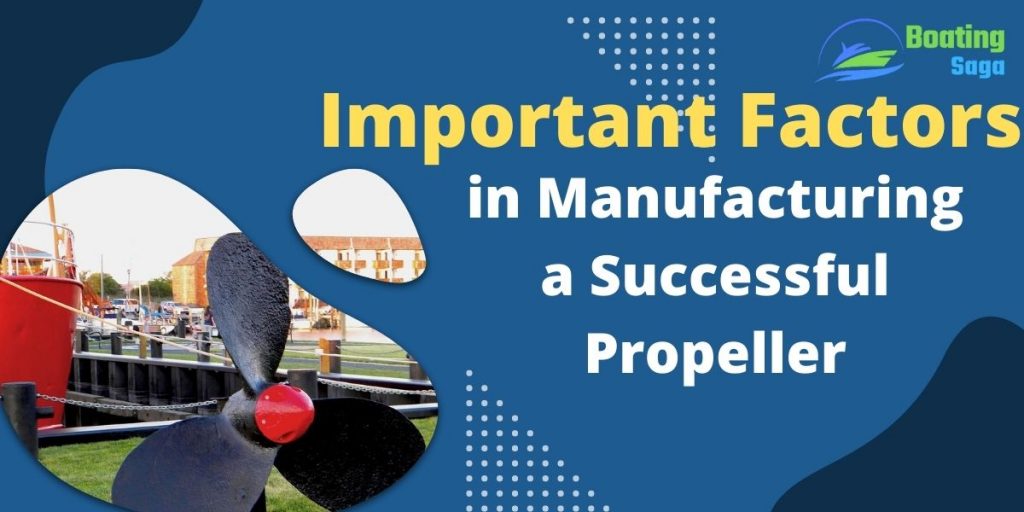
Manufacturing a successful large ship propeller involves many important factors. The shape and size of the propeller, the material it is made from, and the way it is attached to the ship all play a role in how well it performs.
- The shape of the propeller is critical. It needs to be designed to move the most water possible, while also accounting for the specific needs of the ship. The size of the propeller also affects its performance. A larger propeller can move more water, but it will also be heavier and require more power to turn.
- The material used to make the propeller is also important. It needs to be strong enough to withstand the forces exerted on it by water and wind, but also lightweight so that it doesn’t add too much weight to the ship.
- The angle of the propeller also affects its efficiency. If it’s pointed in the wrong direction, it will create drag and slow down the ship. The correct angle depends on how fast the ship is travelling and which direction it’s travelling in.
What Are Some of the Challenges With Making Them?
Designing a large propeller that can efficiently move a massive ship through the water is no easy task. There are a few key challenges that need to be considered when designing these props.
One challenge is making sure that the propeller is able to generate enough thrust to move the ship, while also minimizing drag. Another challenge is ensuring that the propeller is stable and does not cause excessive vibrations that could damage the ship. And finally, it is important to make sure that the propeller can operate safely in all kinds of weather conditions.
It is important to ensure that the propeller is properly installed on the boat. If it is installed incorrectly, it can cause problems with the boat’s steering and stability.
What Materials Are Used to Make Large Ship Propellers?
There are many types of materials that can be used to make a large ship propeller.
The most common material is bronze, which is very strong and durable. Stainless steel is also commonly used, as it is resistant to corrosion. Some propellers are made from light alloys, which are lighter and more efficient than other materials. However, these alloys are also less durable and require more maintenance.
Composites are made of multiple materials that are combined together to create a stronger material. This can be beneficial for propellers because it can create a lightweight and strong prop.
The shaft is made from a tough alloy of copper and nickel. The bearings that the shaft rides in are made from either bronze or a proprietary synthetic material.
How Do Large Ship Propellers Work?
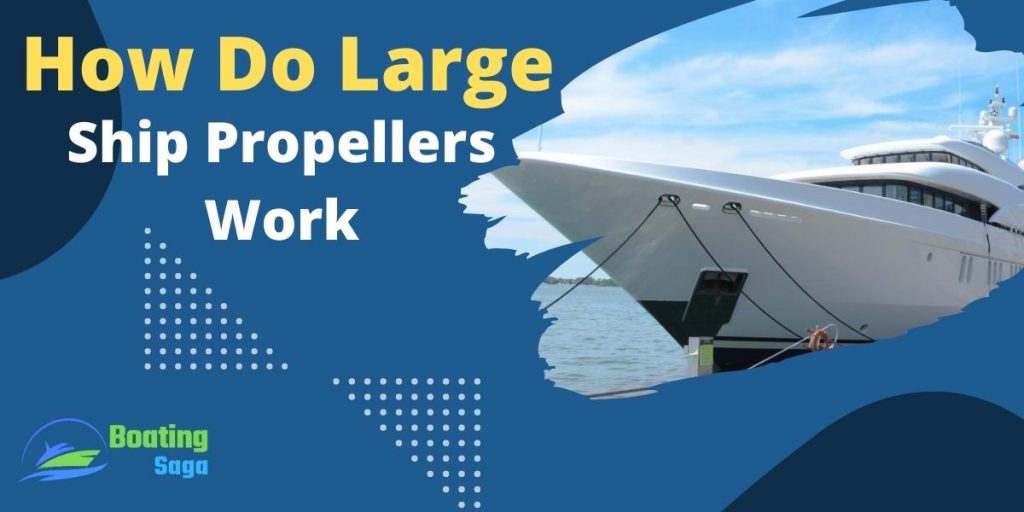
When a large vessel moves through the water, it creates a wake in its path. The size of the wake is proportional to the displacement of the vessel and its velocity. A large propeller can move more water than a small one, so it creates a smaller wake. A large ship typically has several propellers, each of which is driven by its own motor.
The blades of a ship’s propeller are designed to produce thrust, which is the force that propels the ship forward. Thrust is generated by the movement of air or water over the blades. The angle of the blades and their shape also affect how much thrust they generate.
The tips of the propeller blades move faster than the rest of the blade. This causes a decrease in pressure on the top of the blade and an increase in pressure on the bottom. This difference in pressure creates lift, which helps to push the boat forward.
How Long Does It Take to Make a Large Ship Propeller?
It takes about more or less 8 weeks to make a large ship propeller. The process begins with the manufacturer receiving the order and then creating a custom mold based on the specifications provided by the customer.
Once the mold is created, the manufacturer will start to create the propeller blade molds. It takes about two weeks to create all of the propeller blades. Once the blades are created, it takes about four weeks to assemble the propeller and paint it.
How Powerful Are Large Ship Propellers?
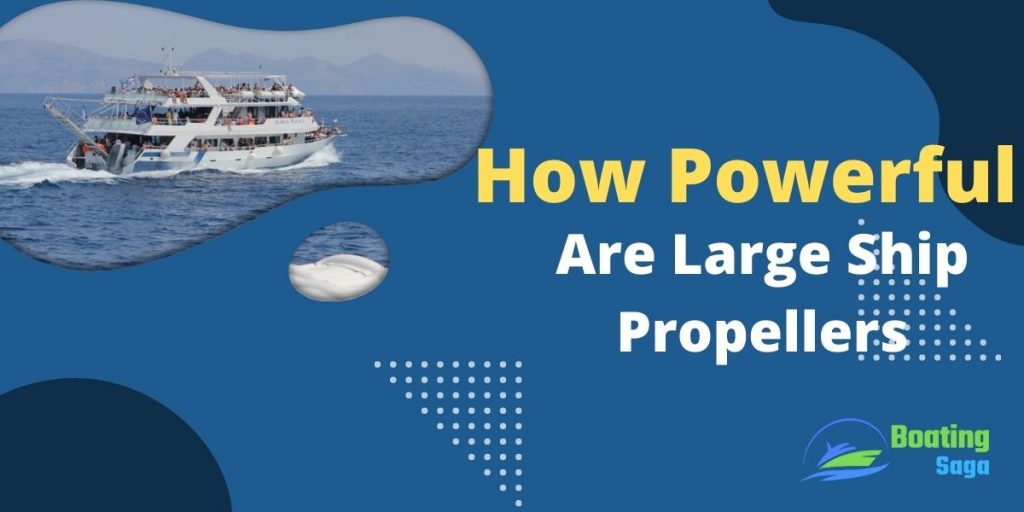
The size and power of a propeller is determined by a number of factors, including the engine horsepower, displacement and hull speed.
Large ship propeller can generate up to 100,000 horsepower and move a ship weighing up to 1 million pounds at speeds up to 18 knots. Some naval ships have even larger propellers that can generate up to 250,000 horsepower.
For example, the Queen Mary 2, one of the largest cruise ships in the world, has four propellers that each weigh over 100 tons. That means that each propeller has more than 200,000 horsepower!
Another large ship, the USS Nimitz, has six propellers that together generate more than 2600,000 horsepower.
In order to achieve the best possible performance, marine engineers design each ship’s propeller configuration specifically for that vessel.
What is the Difference Between a Small and Large Propeller?
Small and large ship propellers can be easily distinguished by their size.
Large propellers are much bigger in diameter than small propellers. This is because a larger propeller can create more thrust, which is necessary for larger ships. Additionally, the blades on a large propeller are typically longer and wider than those on a small propeller. This allows the large propeller to move more water, and therefore create more thrust.
Another difference between small and large ship propellers is their shape. Small propellers have more curved blades, while large propellers have more straight blades.
Small propellers are typically made of bronze or aluminum, while large propellers are often made of steel.
Another difference is that small propellers typically have fewer blades than large propellers. This allows them to turn more quickly and generate more power.
What is the Diameter of a Large Ship Propeller?
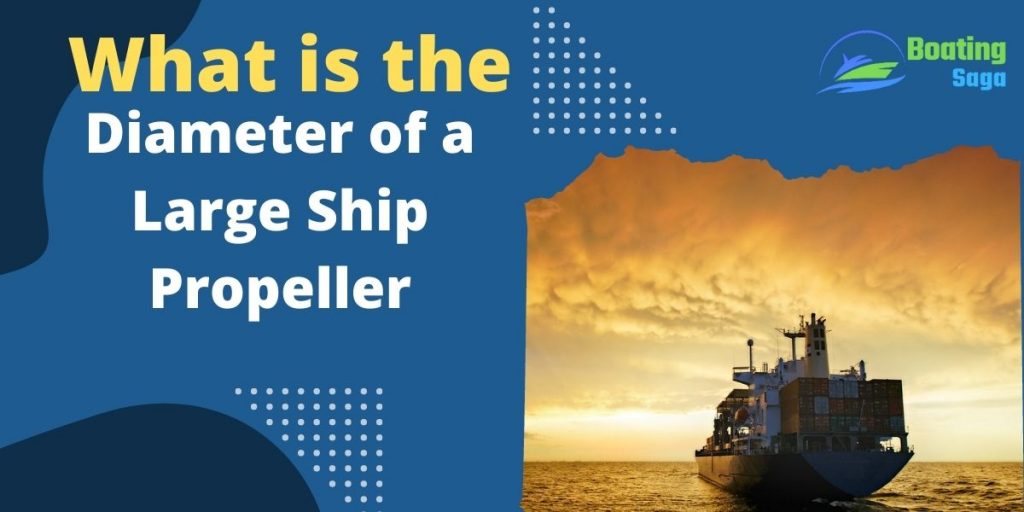
The diameter of a large ship propeller is typically anywhere from 3 to 6 meters, but can be as large as 8 meters. This means that the propeller can move a lot of water and create a lot of thrust. In fact, a large ship propeller can move as much as 10,000 tons of water per minute!
This measurement is important for two reasons: the size of the propeller affects how much power it can produce, and the size of the propeller also affects the amount of drag it creates as it moves through the water.
For these reasons, naval architects must carefully consider a variety of factors when choosing the right prop for a vessel.
Related Questions:

How Do They Clean the Large Ship Propeller?
Ship propellers are large and require a lot of cleaning. The size and shape of the blades make it difficult to clean them manually.
One way to clean a ship propeller is to use a high-pressure washer. The high-pressure washer sends water out at a high speed, which can clean the blades of the propeller. The water also helps to remove any dirt or debris that may be on the propeller.
Another way to clean a ship propeller is to use a brush. The brush can help remove any dirt or debris that may be on the blades of the propeller. The brush can also help remove any rust or corrosion that may be on the propeller.
What Causes a Ship Propeller to Fail?
A propeller can fail for a number of reasons:
The most common of which is cavitation. Cavitation occurs when vapor bubbles form in the propeller’s wake and collapse, creating tiny shock waves that can erode the metal. Other causes of propeller failure include blade separation, poor maintenance, damage from impact or foreign objects, metal fatigue, and corrosion.
Propellers should be regularly inspected and repaired or replaced as needed to help ensure safe operation of the ship.
How Can a Damaged or Malfunctioning Large Ship Propeller Be Fixed?
If a large ship propeller is damaged or malfunctioning, there are various ways to fix it. One option is to replace the entire propeller. This can be expensive, so it’s usually only done if the propeller is severely damaged or if it’s not functioning properly due to a mechanical issue.
Another option is to repair the damage or malfunction. This can be done by replacing parts of the propeller or by fixing the issue that’s causing it to not function properly. It’s often cheaper and less time-consuming than replacing the propeller, but it depends on the extent of the damage or malfunction.
In some cases, it may be necessary to temporarily fix the propeller until a permanent solution can be found. This can involve using a bandage or clamp to hold the propeller together until it can be repaired or replaced.
The cost of replacing a ship’s propeller can range from several thousand dollars to hundreds of thousands of dollars. The cost depends on the size and type of propeller, as well as the location of the repair facility.
Conclusion
Propellers are large and complex machines that must be made with precision and accuracy as well as large ship propellers are made through a process that involves many different stages and lots of hard work. The end result is a propeller that is strong and efficient.

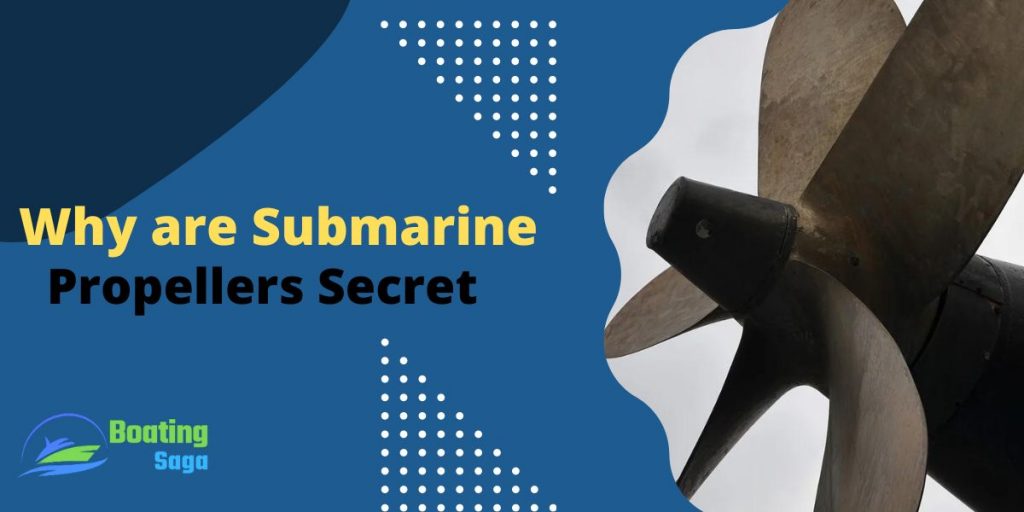

Pingback: Why are Boat Propellers so Expensive? - Lets Find Out - BoatingSaga
Pingback: Why Are Ship Propellers Made of Bronze?- 6 Surprising Reasons - BoatingSaga
Pingback: Why Are Boat Propellers So Small? - 6 Reasons to Know! - BoatingSaga
Pingback: 6 Reasons Why You Should Paint Boat Propeller (Some Tips)